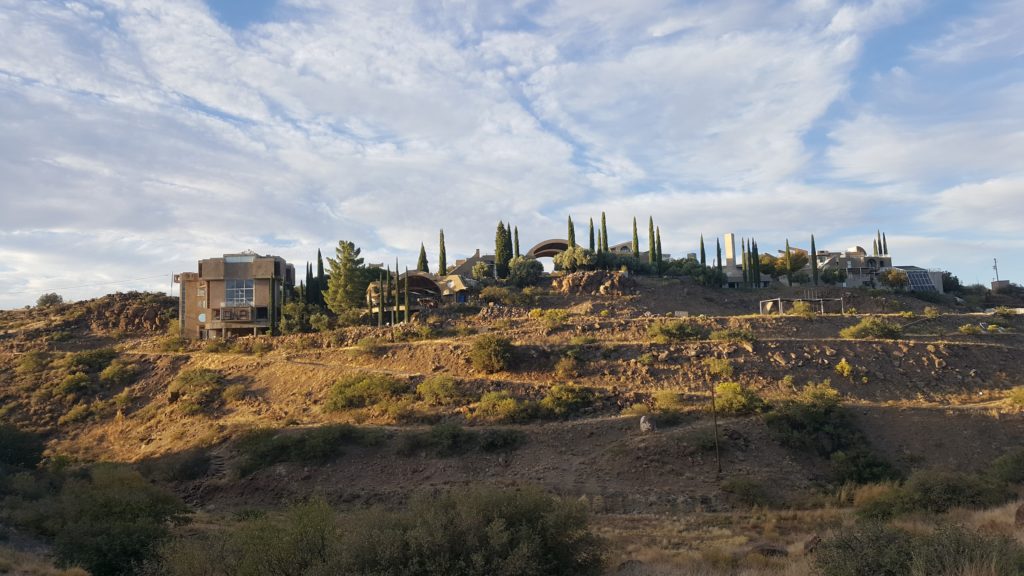Around 50 years ago, the architect Paulo Soleri coined the portmanteau “Arcology” to describe a union of architecture and ecology. His vision was population-dense urban constructs where people could live, work, eat, and even attend civic events all within a single superstructure. You may be familiar with the idea from pop culture references like Sim City 2000 or the 2012 Judge Dredd movie.
The idea actually predates Soleri in a few different ways. Science fiction writers were describing similar settings as early as 1912. And Frank Lloyd Wright’s model for Broadacre City began to illustrate how it could work in the 1930s.
The dream of Arcology was to reduce the environmental demands of human populations. You’d be able to walk everywhere and share communal spaces with your neighbors.
Soleri believed that human populations needed to move to more compact and self-contained communities instead of the sprawl that was already common in the 1960s. In fact, he believed in the idea so much that he founded an experimental community in the desert of Arizona. The site is called Arcosanti and continues today.
My wife and I discovered Arcosanti on a trip to Arizona several years ago. If you’re ever in the area, I highly recommend stopping by. You can even rent a room for the night and stay on the property. We lucked into the Sky Suite, sitting on the top of the city, and had a fantastic time.



Arcosanti nestles into the hilltops like it belongs, a beautiful melding of nature and concrete. And when you visit, you’ll hear from the architects and artists who live there full-time about Soleri’s vision – a future where driving is unnecessary, the community is important, and the imprint of human society is less damaging to the environment.
From utopia to reality
That vision has been echoing in my mind over the last few weeks of the COVID-19 stay-at-home orders.
An article about Frank Lloyd Wright’s Broadacre City in Curbed gives an explanation for why the idea never took off.
In 1932, a planned community of telecommuters probably seemed like science fiction. Today, why not build a Broadacre City where high-speed internet allows everyone who wants to work at home? (Published 2017)
If only they could see us now!
Entirely by accident, we’ve stumbled into a reality that some of the world’s great architectural geniuses dreamed about.
Commuter travel has declined rapidly and a lot of people don’t want to go back to their office parks when this is all over. The initial label of “social distancing” made us all realize how much we need one another right now. Now, “physical distancing and social cohesion” is the new buzzword, and we’re maintaining our communities through digital seders, Zoom calls, and group game apps.
We’ve moved education online at nearly every level, and we’re even attending civic events together online. From rock concerts to opera, we’re sharing in moments without leaving the comfort of our homes.
And it’s leading to a lower environmental impact already. Experts are projecting an 8% decline in greenhouse gases, and closures in meat plants are likely to (at least temporarily) reduce consumption.
Where do we go from here
As it turns out, Arcology was a lifestyle more than a building. Soleri never imagined the Internet and so never imagined work, community, or civic life without physical proximity.
Nothing about the COVID-19 experience is intentional, and no one knows what comes next. But in some ways, we’re getting a glimpse at new a way of life. One with less time spent commuting and more time spent with our communities.
That it had to come at a tremendous loss of life and the economic pain that we’re now facing is a tragedy. But we’re learning that the benefits of Arcology don’t have to be a utopian dream. We have the opportunity to rebuild the world the way we want it to be, and we should take it.